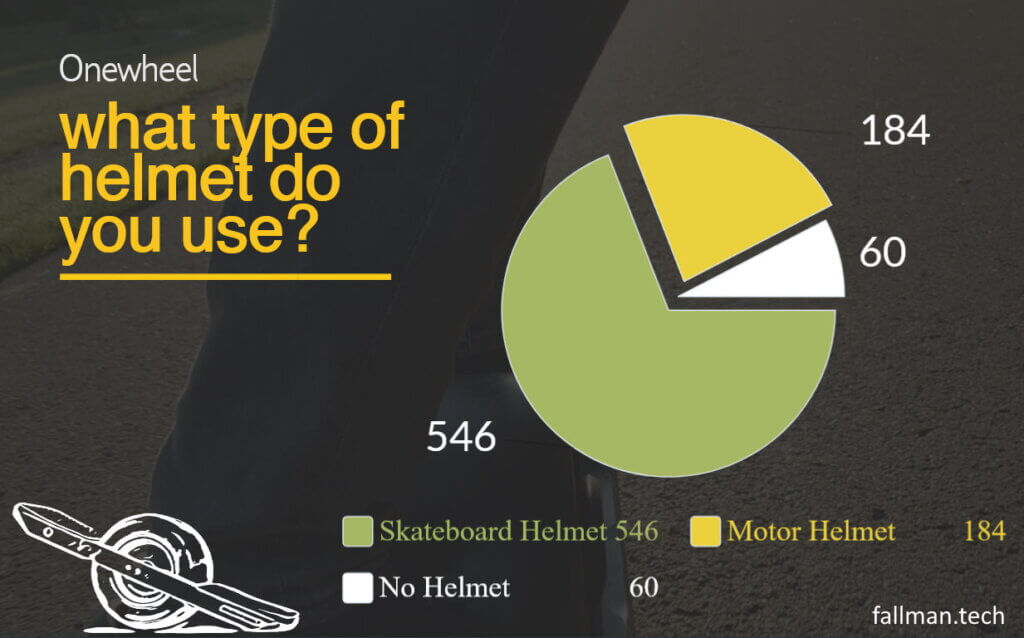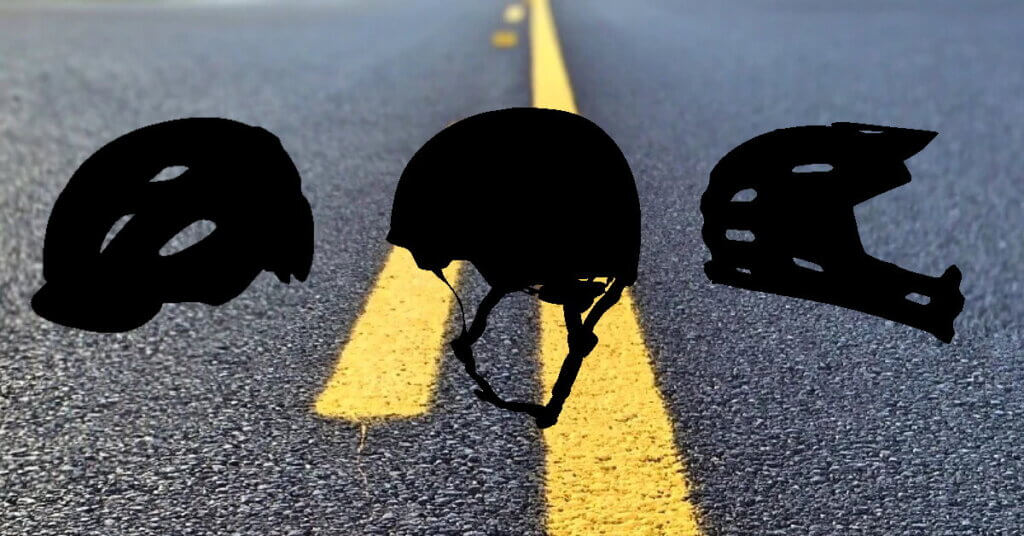In any extreme sport, there is a risk of falling and hitting your head on the ground. It’s always up to everyone to decide the amount of protection to wear, a majority of Onewheel riders (90%*) do agree that the helmet most important accessory you will ever use when riding your Onewheel.
A good helmet could save you from an irreversible and devastating injury. There are multiple lawsuits against Future Motion over the death and injuries related to the Nosedive.
When choosing a helmet for riding the Onewheel there are some options out there that we break down the best helmet for Onewheel.
Key Takeaways:
- Importance of Helmets: Helmets are crucial for Onewheel riders to prevent serious injuries.
- Types of Helmets: The article categorizes helmets into bike helmets, skateboard helmets, and full-face helmets.
- Bike Helmets: Designed for faster impacts and better ventilation, but can withstand only one hard hit.
- Skateboard Helmets: Better for repeated low-speed impacts.
- MIPS Technology: MIPS (Multi-directional Impact Protection System) in helmets reduces the rotational force applied to the brain during a crash.
- Anti-Concussion Technology: Consider helmets with anti-concussion technology like MIPS or WaveCel.
- Personal Preference: The choice of a helmet depends on the rider’s preference and riding conditions.
Remember, safety first! Always wear a helmet while riding a Onewheel, read more down below.

Categories of Onewheel Helmets
Helmets are usually categorized as bicycle, skateboarding, and motorcycle / Full-face helmets. There are also full-face helmets designed for downhill and e-skateboards.
Skate helmets are better for repeated low-speed impacts, whereas a bike helmet can take a faster hit to the ground, but they’re only designed to do so once. Another benefit of bike helmets tend to be better ventilated than skate helmets. If you want a vented or non-vented helmet depends on where you ride.
I’m using a bike helmet with MIPS technology but starting to consider wearing a full-face mountain bike helmet instead. The mountain bike/downhill helmet is much lighter than a motorcycle helmet and still has jaw and chin protection.
Bike Helmet for Onewheel
Many people already have a bike helmet making this the cheapest option. Important to remember is that there is a best-before date on all helmets, it’s not like it will stop working, and the manufacturer will not guarantee the functionality.
As the helmet protects the most important in our body, the brain, I wouldn’t skim on this. An old helmet is better than nothing, still, I would recommend you get a new one if it’s outdated.
A bike helmet is designed to take a faster hit to the ground and break on impact to absorb all the energy, making it single-use in case of a hard hit. There has been an evolution in the helmet industry and nowadays it is recommended to buy a helmet with anti-concussion technology like MIPS or WaveCel. These helmets let the outer shell move and lessen the rotational force applied to the brain during a crash.
MIPS can be found in the newer electric bike helmets that are being developed for the high-speed electrical bikers out there.
Another benefit of bike helmets tend to be better ventilated than skate helmets. If you want a vented or non-vented helmet depends on where you ride.
Disclosure: Some of the links below are affiliate links. This means that, at zero cost to you, I will earn an affiliate commission if you click through the link and finalize a purchase.
Skateboard Helmet for Onewheel
Standard skate helmets are designed for repeated low-speed impacts with the harder outside shell. For anyone training or planning to do some tricks with their Onewheel, a skateboard helmet is a better investment than a bike helmet. You will fall.
A nosedive at max speed will be launching the rider with quite a lot of force down into the ground, it’s recommended to have some additional protection against the rotational motion that will impact the brain, like MIPS or WaveCell. The recommended helmet below got MIPS for added protection against this force.
The downside of a skate helmet is that the jaw and chin are not protected. For that, you will need to look into the motorcycle style or downhill skateboard and MTB section of helmets. They are also not well-ventilated.
Full-face helmet for Onewheel
For anyone who wants to have the greatest protection to stop their face from smashing into the ground then a full-face helmet is the recommended choice.
And helmet that doesn’t cover the chin can easily be moved so that it provides no protection when you need it.
Statistically, it’s only a few crashes that result in jaw-type injuries. Still, if you are a highspeed rider or just want to be as protected as it gets then a lightweight full-face MTB or Downhill helmet is the right for you.
There are a couple of downsides, the biggest are blocked vision and the added weight for the chin guard. Some helmets have removable guards, making it possible to change the level of protection depending on how you plan to ride.
The downside is the additional cost that comes with these types of helmets. They are usually double the price of a standard skate or bicycle helmet.
I’m riding with the TSG Pass Pro, here is why I upgraded from my old bicycle MIPS helmet to this one.
MIPS, which is a leading slip-plane technology inside the helmet designed to reduce rotational forces that can result from certain impacts.
Removable protective chin bar, designed for trail riding adaptability. Attaches with a simple 3-step connection process no tools required.
Overbrow Ventilation features intake ports on the brow of the helmet to usher in cool air and push it through the air-channel matrix for full-head ventilation.
Best Helmet for Onewheel
When it comes to choosing the best helmet for Onewheel, several options stand out based on safety features, comfort, and design. We recommend and use the TSG Pass Pro, here are the other top picks:
- Triple Eight Dual Certified Helmet: This helmet is a popular choice among Onewheel riders due to its dual certification for biking and skating. It comes with two sets of removable, moisture-wicking Sweatsaver Fit Pads for a customized fit and an adjustable chin strap for a snug fit2. It’s also available with MIPS technology for added safety.
- OutdoorMaster Skateboard Cycling Helmet: This helmet is another excellent option that offers a balance between safety and comfort. It’s suitable for various activities, including Onewheel riding.
- Pro-Tec Classic Skate Helmet: Known for its classic design and reliable protection, this helmet is a favorite among many riders.
- Onewheel S1 Retro Helmet: For those who prefer a retro style, the Onewheel S1 Retro Helmet is a great option. It combines a unique design with essential safety features.
- TSG Pass Pro: This helmet is a popular choice among electric scooter, Onewheel, EUC, and eskate riders. It’s the best protection in class for both your head and jaws.
Remember, the best helmet for you depends on your personal preference, riding conditions, and specific safety requirements.
What is MIPS in a helmet?
MIPS stands for Multi-Directional Impact Protection System. It’s a technology that uses a slip plane inside the helmet designed to manage energy from rotational and angular impacts when the rider hits the ground.
Let’s break down how the MIPS safety system works.
Rotational motion, in these cases, can be the result of an angled impact on the head. These impacts may result in a change in the rotational motion of the head that can cause the brain to move or stretch.
The brain is more sensitive to rotational motion than linear motion because it has shear properties similar to water or gel. When different parts of the brain move relative to each other as a result of rotational motion, the tissues can stretch, which can cause concussions or other brain injuries.
The outer protection in a helmet
Most helmets consist of an outer shell made of a plastic or composite material. Beneath that shell is one or several layers of foam, most often EPS (Expanded Polystyrene) or EPP (Expanded Propylene) foam, designed to help absorb energy from an impact. The foam can be engineered with different densities: soft layers that crush under small impacts and harder layers to handle bigger hits.
Rotational motion management
In addition to the shell and foam structure, helmets with a Mips® safety system have a sliding layer added to the helmet structure. This low-friction layer can be installed in the helmet at different distances from the head. Most helmets with a Mips® safety system have the sliding layer positioned closest to the head, allowing a sliding movement of 10-15mm on certain angled impacts, intended to help reduce rotational force to the head. Alternatively, some helmets have a Mips® safety system positioned within the EPS foam, between the foam and the outer shell, or even outside the shell.
How long do MIPS helmets last?
MIPS-equipped helmets last the same amount of time as non-MIPS. The Consumer Product Safety Commission, advises that unless manufacturers recommend otherwise, you should get a new helmet every five to 10 years.
All helmets degrade over time even if they haven’t been into a crash. Plastic becomes brittle and you should always follow the manufacturer’s recommendation and exchange it in time.
Is MIPS worth the extra cost?
MIPS helmets provide an extra degree of safety for all riders. The price difference between a non-MIPS and MIPS-equipped model is low, therefore it is well worth the price if you are buying a new helmet.
Should you wear a helmet on a Onewheel?
The most important protection to wear when riding your Onewheel is the helmet. A good helmet could save you from an irreversible and devastating injury. The brain cannot heal like the bones in your body.
Are MIPS helmets better? Do MIPS helmets make a difference?
Studies have shown that the MIPS-equipped helmet is better at handling rotational impact than the non-MIPS version. MIPS does make a difference in case of a crash. Note that some helmet designs are inherently better at dissipating rotational impacts than others, even before the additional MIPS liner.
Other protective gear lists can be found here
- The best gloves for riding
- The best elbow pads
- The best knee pads
- Lazyrolling Armored Hoodie 1-year review
Disclosure: Some of the links above are affiliate links. This means that, at zero cost to you, I will earn an affiliate commission if you click through the link and finalize a purchase.





